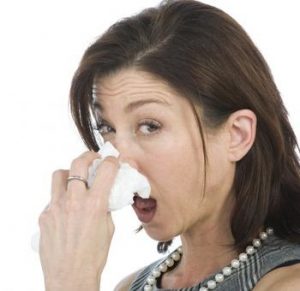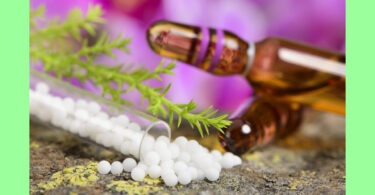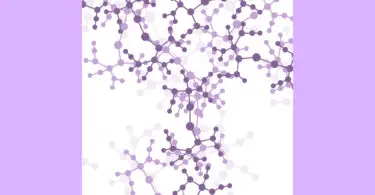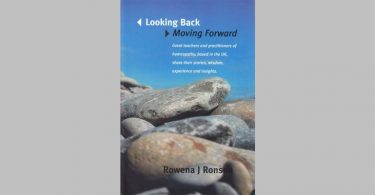
Though brevity is expected of me, I must fix the reader’s attention onto what may be expected of medicine, and this is best done by presenting some statistics, comparing the death rates of this disease in various hands. This concerns the laity more than the profession, for theirs is the risk.
(I) Dr. W. A. Pearson, whom I have known well for over twenty- five years, is Dean of the Hahnemann Medical College of Philadelphia; their hospital, of 592 beds, runs up twenty storeys in the heart of that city. He has certified that he carefully collected records of 26,795 cases of epidemic flu, including 1918, treated by homoeopathic physicians, with the remarkably low mortality rate of practically 1 per cent., whilst for the same epidemics the Orthodox death rate was 30 per cent. I talked with Dr. Pearson in 1934 and he stated that the recurrent death rate averages still held for both schools of medicine. He further told me that many doctors, known personally to him, never lost a case, unless such had previously been “doped” with Aspirin, or such like heart-depressants before the cases were transferred to homoeopathic care.
(2) Another set of statistics is to be found in the International Homoeopathic Directory for 1932, which I compiled (see page 220). This can be obtained from the publishers of this journal. These figures were collected by Dr. T. A. McCann of Dayton, Ohio, who reported same in his Presidential address before the seventy-seventh Annual Congress of the American Institute of Homoeopathy, held at Washington, D.C., June, 1921, and these figures included that most fatal epidemic year of 1918. 24,000 cases treated allopathically, that is by orthodox men, had a fatality rate of 28.2 per cent., whereas, 26,000 cases treated by homoeopathic physicians, including the 1918 epidemic, when their death rate was 1.05 per cent. (also reported in the Journal of the American Institute of Homoeopathy for October, 1921).
(3) See Bulletin 43, Series II, for June 21st, 1934, issued by the “Bureau of Publicity” of the American Foundation of Homoeopathy, at Washington D. C., and read: “The tragic flu epidemic of 1918, an aftermath of War, was for the most part fought by methods of war (Aspirin and Quinine) when in orthodox hands the death rate was roughly 48 percent. and with strict homoeopathic treatment the death rate was 3.95 per thousand cases, or under four-tenths of 1 per cent”.
This death rate is substantiated by an old friend of mine from New York, a Dr. Guy Buckley Stearns, who is now Associate Professor of Materia Medica of the New York Homoeopathic Medical College, in a review of 16,913 cases with but sixty-seven deaths, that is with homoeopathy without Aspirin.
The terrible difference shown in the death rates of the two schools of medicine must be put down to our Homoeopathic medicines and to our method of selecting same. Dr. Stearns dwells on the ever-changing methods of the orthodox with their palliatives, sedatives, narcotics, fever-breakers, purgatives and alcoholic stimulants, which are one and all thoroughly harmful. Aspirin and all coal tar derivatives actually cause untold numbers of unnecessary deaths, with Aspirin worst of all, because it falsely beguiles by its quick relief of pain. Aspirin, whatever the advertisements say, puts a double load on the heart. It weakens the heart and all the vital forces, already taxed to the utmost by disease, and at best it lengthens the convalescence by three or four times that of the convalescence of those treated by homoeopathy.
The remedy you decide to give today may not be the one necessary tomorrow. The particular symptoms must be considered at every prescription, and they must match with what is known of the drug chosen. If you do select the absolute simillimum today, such will run to a remarkable recovery and perfect cure, so rapid in fact that you will get a surprise, and when observed, it is wise to stop all medicine and allow the homoeopathic stimulus to work itself out undisturbed, for Nature is an efficient worker and does not brook over-drugging.
One great difference between the two schools of medicine is that orthodoxy is always flirting with the “maximum” dose which may be given without immediate destructive results, though as long as the “maximum” dose as printed in orthodox works and as allowed by their pharmacopoeia is not exceeded, a death certificate is quite “legal” and does not entail calling in a coroner. We homoeopaths can recognize many “drug-diseases” in patients which drift to us from orthodoxy. We homoeopaths always aim at giving the most minute medical stimulus, never harmful, which will arouse the vital reaction towards natural repair, and we have a guiding rule (similia) on which to base every prescription.
It was Hippocrates (400 B.C.) who formulated the dogma we employ, and Hahnemann gave him full credit for “Let likes be treated by Likes.” This law goes back to the beginning of all TIME, unchanging, and it is employed the world over by every savage in their knowledge of local and tribal medicine, though they know nothing of the underlying law of cure.
The few symptoms I am about to lay before you are the major indications of each drug or “keynotes” as we term them. On the first sign of a chill or an influenza infection having been contracted, take Aconite (3x, 6x or 30) and Belladonna (3x, 6x or 30) alternately, every half-hour for five or six doses each. Put five to eight drops (or pills) in half a glass of water. Stir very well. Take a teaspoonful at a dose, holding same in the mouth as long as is convenient (one minute at least).
If the invasion is not conquered in a few hours, review the peculiar personal symptoms of the invalid and pick out the “similar” symptoms to be found in the patient from the following list. The dosage and manner of taking the medicine will be as given for Aconite and Belladonna, except that the intervals between doses should be from one hour to three hours according to the severity of the symptoms. When the patient is feeling much better, stop all medicine for a time. This is important. Only resort to further medicine, if things are not still proceeding to a cure.
(1) Gelsemium (3x, 6x or 30). The Yellow Jasmine of American-Indian folk-lore and given precision by the homoeopaths. This remedy must be taken when the following symptoms or “key notes” are present. The patient is Dull, Drowsy and Dizzy (the three classical “Ds” of the drug). Fever without thirst. There must be seen trembling, shivering, goose-flesh, lack of thirst, heavy eyelids, which will droop, half covering the eyes, generally with dilated pupils. Cannot think or fix the attention, irritable, wants to be left alone; in extreme cases unconsciousness, delirium, blurred vision. Brain feels bruised, dragging pain, worse in the occiput (above the nape of neck). Occiput pains often work up over head at night to frontal region (over eyes). Much sneezing, tingling in nose, with discharge. Fullness at root of nose. Face heavy and has a besotted expression (compare Baptisia). Tongue thickly coated, yellowish-white; numbness of tongue, feels as if can hardly speak, to partial paralysis of tongue, which trembles on protrusion. Very copious clear urine, almost water-white. Head pains often relieved on passing profuse clear urine. Heart often feels as if it would stop if patient did not move about. Dull aching along spine, even to its base. Yawning marked. Trembling weakness to complete prostration of whole muscular system. Chills begin in extremities, with sensation of heat in head and face. Wants to lie quite still. If stools are liquid and clay coloured, this remedy is the more surely indicated.
(N.B. : A patient need not have ALL symptoms under this or any other drug.).
(2) Eupatorium perfoliation (3x, 6x or 30). Common names, which are significant-Bone-set, Bone-break, and Ague-week. The great “keynote” of this remedy is its intense pains in the bones especially the long bones, which feel as if bruised or nearly broken. The flesh feels actually as if beaten. Can’t bear the slightest touch. Throbbing head pains and a feeling as if the head was pressed on by a metal cap or band. Soreness of eyeballs. Occiput pains worse on lying down. Patient generally thirsty for small sips of cold water. Hoarseness, hacking cough, worse evenings, with soreness and heat in larger air tubes (bronchials). Chest sore on inspirations. Face flushed.
(3) Bryonia alba (3x, 6x or 30). It makes no difference with homoeopathic prescribing what the name of the disease is. If the patient is easier by lying perfectly still, and suffers greatly on the slightest motion, think of Bryonia. This type of patient will have intense dryness of all mucous membranes, even lips become dry and cracked. Thus it is easy to understand that this patient will drink large quantities of liquids at any time, and this is a distinguishing keynote. Pains in throat, chest and head are sharp, cutting and coughing causes splitting head and chest pains, so that patients will hold those parts to lessen such pains. The cough is always hard and dry with little or no expectoration. Pains shoot about the chest on coughing. The patient will be very constipated with hard dry stools, as if baked. Tongue thickly coated. Taste insipid or bitter. Patient exceedingly irritable or angry. Headache commences in the morning on first opening the eyes, with feeling as if head would split open.
(4) Arsenicum album (6x, 30). The patients requiring this remedy will have great and sudden prostration and sinking of vital forces, with great mental disturbance, such as anguish, and intense restlessness. Pains and sensations are described as “burning” in character. Intense thirst, but for little sips only (the opposite of Bryonia). The patient, though burning, craves heat, hot drinks, etc. All symptoms much worse from 1 to 3 a.m. and worse from cold air and cold things; all symptoms better from warm air, rooms and applications. Whilst complaining of internal heat there are many shiverings and creepy sensations of chilliness. There are often intense shudderings even when burning with internal heat. Heavy and rheumatic pains in the head; profuse watery and corrosive discharge from the nose, with burning sensations. Severe aching and burning in the limbs; oppression in the chest with difficulty in breathing. Eyes burn and water, with scalding tears. Cant bear light. Dry fatiguing cough, worse after sundown and especially after midnight, and after drinking. Stools are generally small, dark and offensive, with much prostration after each stool. Fever runs high. (N.B.-Be careful of pneumonic complications suddenly setting in. Such devitalized patients must use bed pan for safety.) In passing I should like to say to dog-lovers that this remedy is oftenest required in “Distemper”, because of the perfect “similarity” of the disease and drug symptoms. Don’t forget this.
(5) Veratrum viride (6x to 30). Note that this acts more quickly in 6x and higher. If a serious case has intense fever with very foul breath, and note well, with a narrow red streak down the centre of the tongue with twitchings and spasms, it will be well to read up this drug in a Materia Medica to see if patients other symptoms fit in with what is recorded. It is all important in many grave cases.
(6) Rhus toxicodendron (3x, 6x and 30). To start with, note how the tongue differs from the tongue of all other remedies given. The patient will have a triangular red tip to the tongue. The rest of the tongue is coated and very dry. The patient is very restless, wants to change position continually in order to obtain relief of the aches and pains. Movement only affords temporary relief of symptoms. Complains of lameness and stiffness. Severe cases, untreated, would run on to stupor with mild persistent muttering or even delirium. Great sensitiveness to cold air or draughts. Exposing hands out of bed in cold room will bring on coughing fits. Cough is dry, teasing, continuous and very fatiguing. The reader must consult a Materia Medica for further details.
(7) Euphrasia (3x, 6x or 30). This is the “Eye-bright” of the countryside.
(8) Allium cepa (3x, 6x or 30). The wild Mediterranean-shore onion.
These are two very important influenza remedies, each of which has a clear and opposite indication, impossible to confuse. Euphrasia has acrid tears and a non-excoriating discharge from the nose. Allium cepa has copious watery, and extremely acrid nose discharge, and whilst the tears may feel to burn, they do not excoriate, and the Allium symptoms are all better in the open air. Both these remedies have many other influenza symptoms which space forbids me to detail. Study your Materia Medica to enable you to choose the curative remedy.
(9) Baptisia (3x, 6x or 30). To close this abbreviated lesson I must draw your attention to a totally different and extremely fatal type of influenza, if not treated homoeopathically. It covers and typifies the fatal epidemic of 1918, when thousands of lives were lost because orthodoxy did not know and would not study homoeopathy. Let us see how this drug acted in 1918. The late Dr. Byres Moir, one of Britains best and known by my family since 1876, though vastly “over-age” was placed in medical command of an Atlantic transport during the War. During the height of that epidemic scores of poor American soldiers were sewn up and consigned to the ocean from all the transports but one! Dr. Moir told me that he did not lose a single soldier, due to his being able to “diagnose Baptisia for his flu cases”. I asked him why he had not reported this remarkable success to our journals. He replied that he could not, because he was a public servant in the employ of the Government. The “disease-picture” of that type of influenza, which fits the “drug-picture” absolutely, is as follows, and some medical readers will recognize the precise similarities. The symptoms are somewhat of a typhus- typhoid nature, putrid, highly septic, and infectious. The mind is confused, running fast to stupor; face dark to dusky, with a heavily besotted expression. Eyes bleared. Early in the disease the mind becomes confused; falls to sleep before he can answer a question, or he stops in the middle of a sentence. Mouth putrid, ulcerated, with foetid breath. The tongue yellow at first, becomes darkly streaked down the middle, with many red papillae standing out edges dark red and shiny. Tongue soon becomes cracked and ulcerated, with tendency to putrid ulcers throughout the mouth, and with sordes (back patches) on lips and teeth. Breath becomes terribly foul, in fact all secretions and discharges (urine, stools, and sweat) are extremely offensive. Some patients think that they are in several pieces, and feel around the bed, trying to collect the scattered portions. Can only swallow liquids. Solids gag. Breathing is difficult. Lungs feel compressed. Body feels sore and bruised. Livid spots and areas appear all over the body and extremities, and without Baptisia these cases are doomed. (Compare our Lachesis for under- skin hemorrhages, especially in Yellow fever) Remember Dr. Moir did not lose a case of Septic flu, or diagnose it what you will. What a pity for humanity that orthodoxy won’t study homoeopathy!






Dear Dr. Hoyle,hello
You have very aptly described the wonders of homeopathy,to fight diseases including Flu.Pity the orthodox, so called Doctors don’t believe us and are controlling the world for health.But hopefully the truth will prevail and the saner elements will embrace the Devine method.
I practice Radiesthesia to find the right similimum the very first time without any fear of wrong diagnosis and loosing the precious time for sometimes serious patients and the result is remarkable